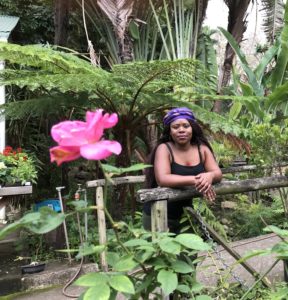Felicity Coughlan: Blended learning done right could save us
A key buzzword at the moment in the education space is “blended learning”, but very few people would have heard this term before the higher education crisis forced the hand of public universities to introduce this delivery method ahead of this year’s final exams.
Even now, few people understand what blended learning entails, save for the fact that somehow technology and the internet are involved. Although many universities turned to “blended learning” as a way to ensure students are able to complete their academic years, and this strategy indeed went some way toward fulfilling its aim, it is now important that the public understands what blended learning is and isn’t; particularly as it is expected that higher education institutions will increasingly incorporate this method of delivery into their programmes.
As one public higher education institution noted at the time of the nationwide protests, teaching and learning would be “taking place by means of a variety of different approaches, including blended learning, which relies heavily on digital and online materials. Each faculty and discipline is developing its own approach to teaching and is communicating with its students accordingly”.
While one understands the approach taken, simply taking the materials and instruction that would have been delivered via contact method and then delivering them via electronic methods does not equate to blended learning.
Introducing blended learning components to the curriculum takes time and planning and needs to be part of the course design. It is something that needs to be done right – not added as an afterthought.
Successful blended learning programmes require careful strategy and crafting over long periods of time, with the input of teams of experts from various fields. Simply posting content on an online platform is not blended learning – it is really just another form of making learning content available.
The advantages of blended learning opportunities – if properly done – are many. But the pitfalls, if blended learning is not introduced as part of a strategic, pro-active programme, are legion.
On the plus side, blended learning allows students greater autonomy over their time and preparation. They can work through concepts and content more than once; they can engage with others who are working through the same content, and they can get individualised input from the lecturers or tutors supporting them online. In addition, these students also get to master a new set of skills related to working online that are invaluable in the modern knowledge economy.
On the other hand, the downsides are pretty much the same as they would be for any other form of self-directed learning, which has not met with huge success in South Africa, and particularly where students do not receive the crucially necessary support from their higher education institutions.
Simply put, if students do not have the self-discipline to self-pace their learning, they will be left behind very quickly.
That is why bona fide blended learning programmes, which were structured pro-actively and not reactively in an effort to decentralise delivery, have in place effective student support teams monitoring student engagement to keep students on track.
Additionally, a successful blended learning programme needs to be cognisant of logistical challenges, and should be structured to take these into account. Many poorly designed systems are data heavy, becoming expensive and frustrating to access, particularly when they include too much video content, and where bandwidth and connectivity are concerns.
The Independent Institute of Education, particularly at its Rosebank College digital campuses, has been at the forefront of introducing and developing blended learning programmes for the past four years, in recognition of the fact that this method offers an opportunity for those students who require greater flexibility at a lower cost.
Equally, we have found that it is an exciting and rewarding approach for digitally interested – if not yet skilled – students who want to pace their own learning to get the best of contact learning (which is the relationship with lecturers and students), while also being able to access all the benefits the online platform provides.
But with blended learning, the design of the learning is everything. Therein lays its success or its downfall.
In the first session of a learning unit, the student and lecturer engage in framing the learning and the key concepts. Students then work on their own and with other students and with an online tutor on the online platform. The lecturer engages and monitors and a final contact session is used to book-end the learning unit. In this session, the lecturer uses the evidence of learning (or confusion) from student online activity to structure the contact session, which then is able to focus on what students need to know rather than trying to cover everything.
This is true blended learning, and higher education providers, whether public or private, would do well to investigate and invest in this method in years to come.
But it would be of some concern if institutions increasingly started adding “blended learning” programmes haphazardly, either as a knee-jerk reaction to external pressures, or as an attempt to jump on the bandwagon of this “new” idea, in an effort to entice prospective students attracted to the idea of being master of their own time and ‘studying online’.







Thought provoking article. Thank you!
South African universities have been implementing and adopting blended learning as good pedagogy for enhancing teaching and learning almost a decade long.(some even longer) The adoption curve can be described as slow but in most cases is strong and done soundly. Many institutions have defined their intervention strategies as “blended learning” during times of #feesmustfall, when in fact interventions has been based on a fully online methodology. Many top institutions have a blended pedagogy and simply extended its benefits to the exams. The perfect “blend” simply does not exist and its complete adoption is still a matter of research in a country as unique as they come. But an great opportunity indeed, but the bigger concern is why are primary and high schools not adopting blended learning more intuitively. Just some thoughts. Great article.
I switched from attending lectures at a university to studying through UNISA where I could put forward my own ideas and opinions provided I could back them up with recognized references. I enjoyed the discourse and the convenience so much that I ended up studying for twenty-five years and obtaining numerous degrees for the sheer love of learning. It enhanced my job financially and I was able to impart my knowledge to others. I recommend it or some form similar to all who wish to advance or obtain knowledge in all spheres.
If anything, the educational crisis of 2016 killed the prospects of blended learning. As universities locked down campuses they wanted to be perceived as continuing with their educational programmes. Distance education and online learning has a bad reputation with about than 5% of students able to succeed. Distance education changes a fraction if what residential universities charge, and what students already paid for the year. Blended learning is indeed the new buzzword – and overnight universities supposedly switched to this new grand system. However, nothing was planned; no content existed; the contact part of the blend was removed and the digital part created in an ad hoc manner, if at all. In essence, what was proclaimed as “blended learning” mostly boiled down to studying from the textbook. If universities continue to spread the myth that they completed the academic year by using blended learning, few students who experienced this form of “education” will willingly opt-in. In this regard I agree with the author’s words of warning.
On the other hand, I am not convinced by the author’s argument that blended learning is the claimed panacea when correctly implemented. The true student always used multiple sources to study. In 1970 Shulman (J Med Educ. 1970 Nov;45(11):90-100), as one example, pointed to the requirement for students of “self-instruction wherever possible”. He posited that this “need not necessarily be through programed [sic] textbooks or textbooks”, but notes that “such devices have certain advantages under some conditions”. It is almost have a century later and I doubt that we have a clear picture of what those advantages and those conditions are – and what the concomitant dangers are. Shulman concludes: “In our continuing pursuit of educational excellence, we must avoid a serious pitfall that haunts many programs of curriculum reform. It is the quest for that Holy Grail of an ideal mode of instruction – some approach to teaching which is, in principle, better than any other. … Just as no medication can be judged without reference to a particular disease and its specific manifestations in those being treated, no teaching method, be it lecture, discussion, programed [sic] text, or simulation, can be evaluated in the absence of objectives and student characteristics.”
Of course the medical metaphor does not stop here. When new medications are introduced all involved know which authoritative study conclusively showed it efficacy and safety. Do we as academics not owe our students similar guarantees when we pin our hopes on new “buzzwords” with where meaning is still contested? What happened to the promises of the PLATO system that was in prominent use in South Africa in the 1970s and 1980s that would have helped to educate the masses? Yes, it still exists in a new form, but not at our universities where it was deployed. I have high hopes for blended learning. However, it is not THE solution.
I encountered blended learning being implemented at South African universities years ago in a very strategic way, not because it is a “bandwagon” but because it was becoming an important part of training and development both at undergraduate level, as well as continued professional development in the workplace.
Students who lack the discipline of self paced training are going to find it really difficult as they enter the workplace where they become responsible for their own continued development, often without any institutional support. They need to learn this sooner rather than later.
Blended learning is not rocket science, it is well within the capabilities of our institutions to make the transition to a more efficient teaching model. The recent pressures on higher learning institutions in South Africa have merely catalysed the inevitable transformation, and we can expect significant shifts towards blended, distance and online learning in the near future.
I’m curious if we are related.
very educative article,i believe we are in-times were Blended learning can not be ignored but need careful planning and implementations so that students benefit from it.Thanks for the article it is very strategic.